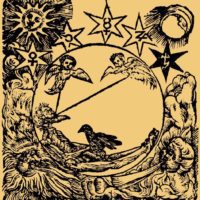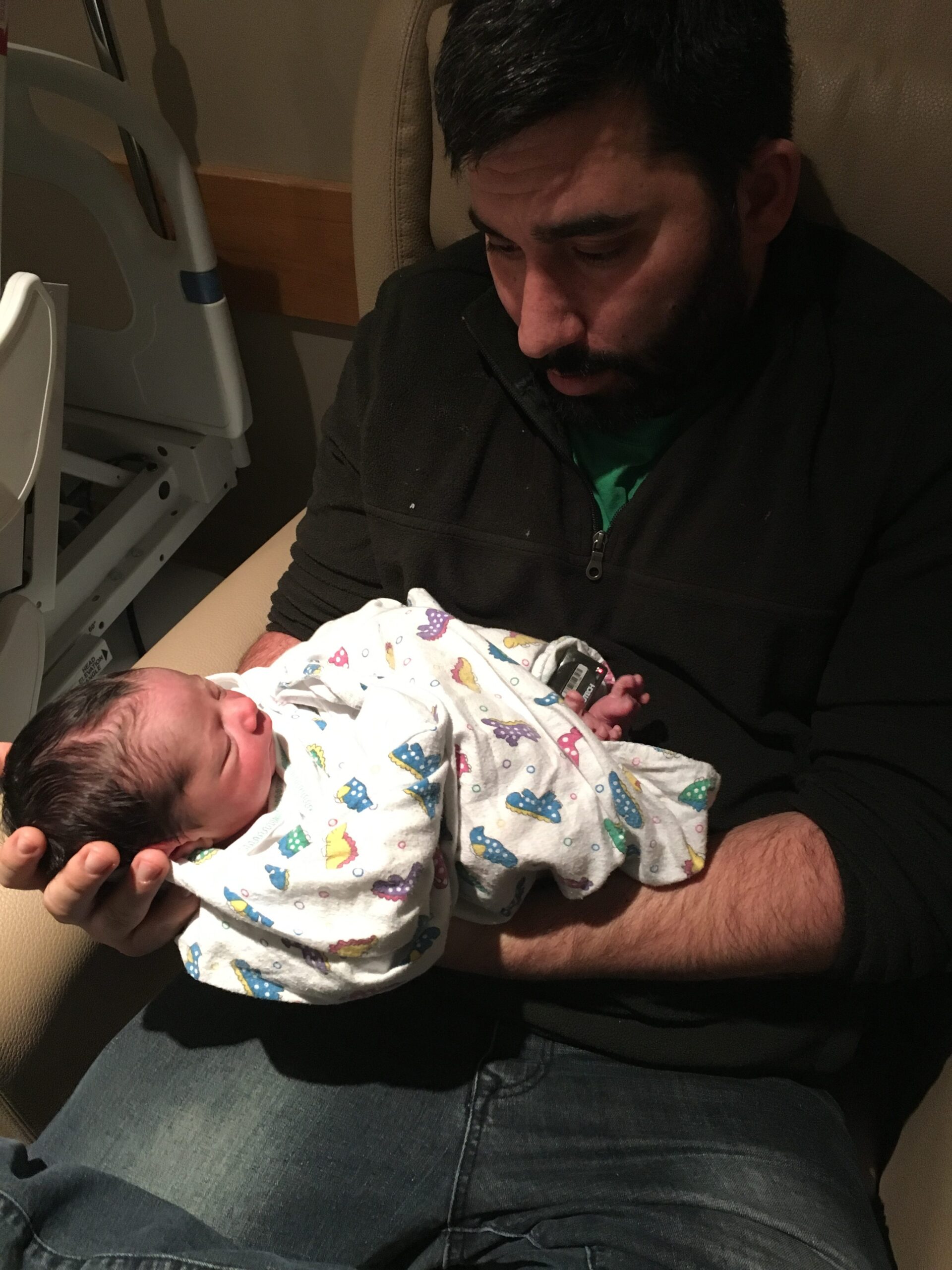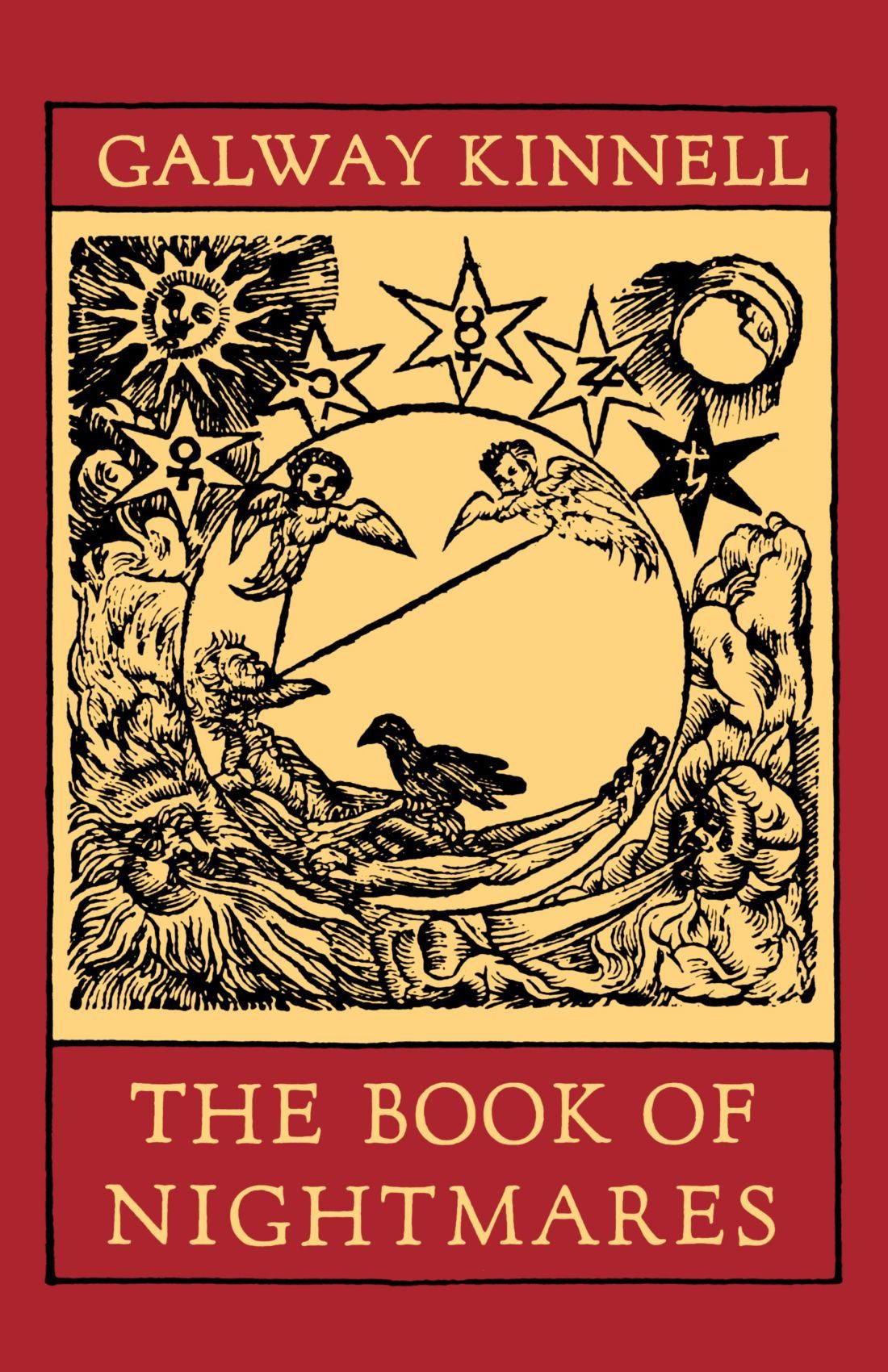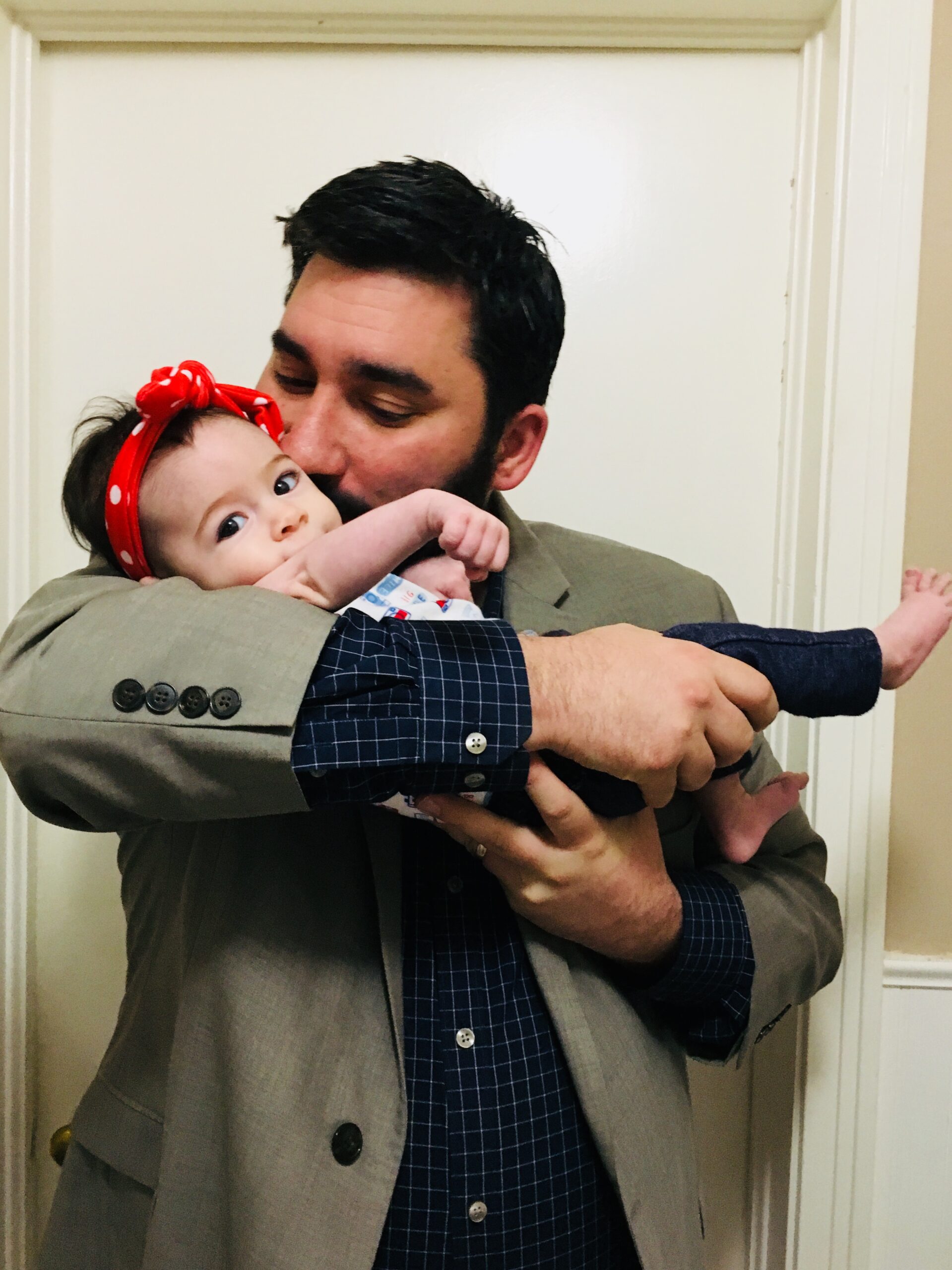2018 began interlaced with a double helix of joy and fear. Each morning, my wife and I would wake and check our phones to see what threat or embarrassment had come from the White House. Despite our chronic, visceral, exhausting dread, we were happily expecting the birth of our first child. Our daughter, Luciana Jubilee, was born on January 9.
As fathers and mothers have done since the dawn of time, my wife and I considered what it meant to bring a child into a world of suffering and injustice. I’d spent most of 2017 eagerly anticipating fatherhood while meditating on how some of the greatest contemporary poets have responded to Donald Trump and the historical injustices that he so openly perpetuates. This culminated in an anthology I co-edited with María Isabel Álvarez, Misrepresented People: Poetic Responses to Trump’s America, published on February 9, 2018 by New York Quarterly Books.
I drew strength from the words of established maestros like Martín Espada, Timothy Liu, Kamilah Aisha Moon, Alberto Ríos, Kevin Prufer, and Patricia Smith. I discovered new poets to admire, including Eloisa Amezcua, Jennifer Givhan, Xandria Phillips, Alexandra Lytton Regalado, and Jameka Williams. I returned to poets whose political consciousness has always inspired me, especially Espada, Audre Lorde, Adrienne Rich, and Muriel Rukeyser. I also found myself rereading The Book of Nightmares, Galway Kinnell’s greatest poetic achievement.
The Book of Nightmares was published in 1971 at the height of both the Vietnam War and the Cold War, under the Nixon administration. The year several members of the Manson family were sentenced to the gas chamber; the year the Supreme Court ruled the Pentagon Papers should be released; the year Camden, New Jersey erupted into race riots (after a Puerto Rican motorist was murdered by white police officers); the year Donald Trump became president of The Trump Organization. I first read this book as an undergraduate in the late 90s, sometime between the Columbine shooting and the election of George W. Bush. Nearly fifty years after its initial publication, Kinnell’s book-length poem speaks even more profoundly to the fears and pathologies of Trump’s America than it did to those of Nixon’s.
M.L. Rosenthal began his New York Times review of The Book of Nightmares by noting the work’s central preoccupation: “…the world of terror raging beneath the sill of daylight consciousness.” Indeed, Kinnell’s book dramatizes the riven interior kingdom of a flawed and striving father, trying to come to terms with the brutality at the heart of human existence. The Book of Nightmares obsessively confronts the twin subjects braided throughout Kinnell’s entire oeuvre: the bleak fact of his own (our own, your own) mortality and a stubborn, deeply mitigating, sometimes stupid, belief in love. Nowhere in the poem does Kinnell more aptly explore the connections between a father’s love for his daughter and his knowledge of death than in the book’s seventh section, titled “Little Sleep’s-Head Sprouting Hair in the Moonlight”:
I have heard you tell
the sun, don’t go down, I have stood by
as you told the flower, don’t grow old,
don’t die. Little Maud,
I would blow the flame out of your silver cup,
I would suck the rot from your fingernail,
I would brush your sprouting hair of the dying light,
I would scrape the rust off your ivory bones,
I would help death escape through the little ribs of your body,
I would alchemize the ashes of your cradle back into wood,
I would let nothing of you go, ever,
until washerwomen
feel the clothes fall asleep in their hands,
and hens scratch their spell across hatchet blades,
and rats walk away from the cultures of the plague,
and iron twists weapons toward the true north,
and grease refuses to slide in the machinery of progress,
and men feel as free on earth as fleas on the bodies of men,
and lovers no longer whisper to the presence beside them in the
dark, O corpse-to-be …
And yet perhaps this is the reason you cry,
this the nightmare you wake screaming from:
being forever
in the pre-trembling of a house that falls.
As an undergraduate, I could understand the mastery of these lines; as a new father in 2018 I feel them aching inside my bones. Maud’s innocent avowals, her entreaties for some type of earthly permanence, lead to Kinnell’s impassioned apostrophe of her life’s incalculable value. Kinnell’s poetry maintains a raw awareness of life’s transience. The poet obsessively confronts the powerlessness he feels as a parent when it comes to protecting his children from suffering and death; herein lies the true nightmare at the center of The Book of Nightmares. Rocking my daughter to sleep, hovering over her basinet in the evenings just to look at her, watching my wife breastfeed her in the blue hour of the early morning, I now more fully understand the sentiment behind the lines: “I would alchemize the ashes of your cradle back into wood, / I would let nothing of you go, ever.” I find myself thinking of those lines when I kiss the sweet downy black swirl of hair on the top of Luciana’s head. I also find myself thinking of the last two lines of this section as a near-perfect description of existence, and as a spot-on rendering of what it feels like to live in the United States at this stage of American empire: “being forever / in the pre-trembling of a house that falls.”
The Book of Nightmares endures as much for its finely-wrought structure as for the way it addresses the timeless subject matter of love and death. Rilke’s ten-part Duino Elegies provided Kinnell’s tonal and formal inspiration for The Book of Nightmares. Kinnell divides his book into ten parts. Each part subdivides into seven sections, a pattern that echoes the year, 1970, of the poem’s completion. The book begins, in the manner of The Divine Comedy, somewhere in a dark wood, a beginning that signals the ambitious scope of the poem-to-come. Kinnell’s dark wood is wet and lonely: amniotic, chthonic, archetypal. Kinnell’s association with Deep Image poetry is apparent from the outset at the level of his diction; you can’t throw a stone in The Book of Nightmares without hitting “darkness,” “light,” “bones,” “rot,” another “stone,” and so on. Even so, when the narrative moves from the pretense of the dark wood to a recollection of the newborn Maud, Kinnell’s poetry ignites and becomes undeniably luminous:
A round-
cheeked girlchild comes awake
in her crib. The green
swaddlings tear open,
a filament or vestment
tears, the blue flower opens.And she who is born,
she who sings and cries,
she who begins the passage, her hair
sprouting out,
her gums budding for her first spring on earth,
the mist still clinging about
her face, puts
her hand into her father’s mouth, to take hold of
his song.
In these lines, Kinnell establishes what will become the greatest achievement of this book, its chronicling of a father’s love for his children, channeled from the emotional upheavals and latent energies of early parenthood. Since becoming a father, I’ve found that the greatest ambition I have in my writing life is to leave something as sweet and lasting and fortifying for my dear little Luciana as Kinnell left for his son, Fergus, and for his daughter, Maud.
“Under the Maud Moon,” the first part of The Book of Nightmares juxtaposes the implacable loneliness of the cosmos against the light of fatherly love. In addition to framing the poem as a journey, and introducing the poem’s central thematic concerns, Kinnell also manages some violently beautiful descriptions of Maud’s birth:
and she skids out on her face into light,
this peck
of stunned flesh
clotted with celestial cheesiness, glowing with the astral violet
of the underlife. And as they cuther tie to the darkness
she dies
a moment, turns blue as a coal,
the limbs shaking
as the memories rush out of them. Whenthey hang her up
by the feet, she sucks
air, screams
her first song – and turns rose,
the slow,
beating, featherless arms
already clutching at the emptiness.
Notably, death and song attend Maud in her first moments outside of the womb. The depiction of Maud here anticipates the depiction of the title animal in the next part of the book, “The Hen Flower.” In “The Hen Flower,” Kinnell meditates on mortality by invoking animal husbandry. The raising and slaughtering of the hen echoes the terrible brevity and violence of human existence. In the era of drone warfare and the apotheosis of the touchscreen, “The Hen Flower” also serves as a reminder how far removed many middle-class Americans, like me, are from the realities manifest in “the opened cadaver / of hen” and “the icy pulp / of what is.”
From “The Hen Flower,” Kinnell shuffles, in the third through eighth parts of The Book of Nightmares, between the poem’s initial conceit of being lost on a journey and grotesque images evoking the violence in Vietnam during the 1960s; as readers, we shuttle between sensitively wrought depictions of his small children and strange opaque interludes in hotel rooms and on cross-country flights. At times, Kinnell’s work appears frustratingly impenetrable. Readers in 2018, for instance, might struggle to make sense of the partially epistolary section, “Dear Stranger Extant in Memory by the Blue Juniata,” based on an actual correspondence Kinnell had with a mystic by the name of Virginia (who lived by the Juniata River in Pennsylvania). Readers today might also be wary of Kinnell’s imagery when it bears the flighty astrological stamp of the counterculture (as when “the crone” holds a crystal skull under the moonlight and “across the Aquarian stars.”). Much might be made, as well, of the erotic energies animating Kinnell’s work, which are untidily diffuse, and tainted by the normative views on gender roles that contaminated the work of the poet’s male contemporaries (such as, for example, James Dickey). However, Kinnell writes at his strongest when he indicts state sanctioned violence, the legerdemain of twentieth century consumer culture, the history of western imperialism—all with an eye toward his own children—as he does in one of the most powerful sections of The Book of Nightmares, “The Dead Shall Be Raised Incorruptible.” Kinnell moves through the ruptures of twentieth century warfare, historicizing those ruptures as he goes. Kinnell channels the voice of the oppressor, intoning:
In the Twentieth Century of my trespass on earth,
having exterminated one billion heathens,
heretics, Jews, Moslems, witches, mystical seekers,
black men, Asians, and Christian brothers,
every one of them for his own good,a whole continent of red men for living in unnatural community
and at the same time having relations with the land,
one billion species of animals for being sub-human,
and ready to take on the bloodthirsty creatures from the other planets
The “poison nightflower” of the American century comes into clearer relief through this litany of evil intent. Kinnell’s voice assumes a vatic clarity; you can hear Trump in the bombast: “I swear on my chromium testicles / of… my fear of love, my itch for money, and my madness.” From the madness of napalmed bodies and burning cities the poet finds his way back to his own hearth.
The seventh part of The Book of Nightmares, “Little Sleep’s-Head Sprouting Hair in the Moonlight,” pivots from carnage to cradlesong as Kinnell addresses the newborn Maud. The sweet ache of “Little Sleep’s-Head” contrasts starkly with the conflagrations of the dead and dying in “The Dead Shall Be Raised Incorruptible.” “Little Sleep’s-Head” begins with Maud waking from a nightmare and ends with her father putting her back into her crib:
Back you go, into your crib.
The last blackbird lights up his gold wings: farewell.
Your eyes close inside your head,
in sleep. Already
in your dreams the hours begin to sing.
Little sleep’s-head sprouting hair in the moonlight,
when I come back
we will go out together,
we will walk out together among
the ten thousand things,
each scratched in time with such knowledge, the wages
of dying is love.
The central insight of Kinnell’s entire body of work might be summed up in the phrase “the wages / of dying is love.” This phrase is Kinnell at his most Whitmanesque and flying. Love exists as a communion earned through the unaccountable truth of suffering. This concluding insight lends even more poignancy to the father’s protectiveness; his daughter’s life will inevitably entail grief, as all lives do. Fortunately, during the lifelong journey she will take toward death, she will be rewarded, as we all are—should we learn to accept the reward—with love, ordinary unromantic daily love with all its thorns and affronts and crudities and rough edges and saving affirmations.
The concluding parts of The Book of Nightmares, “The Path Among the Stones” and “Lastness,” return the poem, once again, to the conceit of the wanderer and his path. Here, Kinnell’s Deep Image poetry most acrobatically performs as the poet brings his masterwork to a close. Every stone in these sections, every word, every image, is a “granite nuclei, / glimmering…with ancient inklings of madness and war” (and love, and fear, and so on). Kinnell displays his great facility with the image in lines such as the following description of a “wafer-stone”:
which skipped ten times across
the water, suddenly starting to run as it went under,
and the zeroes it left,
that met
and passed into each other, they themselves
smoothing themselves from the water…
The pattern of the wafer-stone skipping ten times across the surface of the water recalls the method of The Book of Nightmares as a whole, wherein ripples of meaning meet and pass into each other from section to section and part to part, appearance and vanishing elided in the moment of formation. Kinnell affirms this structure in the last two sections of the book, culminating in his address to his son, Fergus:
6
This poem
if we shall call it that,
or concert of one
divided among himself,
this earthward gesture
of the sky-diver, the worms
on his back still spinning forth
and already gnawing away
the silks of his loves, who could have saved him,
this free floating of one
opening his arms into the attitude
of flight, as he obeys the necessity and falls . . .7
Sancho Fergus! Don’t cry!
Or else, cry.
On the body,
on the blued flesh, when it is
laid out, see if you can find
the one flea which is laughing.
Ultimately, The Book of Nightmares retains its power because of the fierce intimacy that is at its core; the nobility of Kinnell’s project here resides in his drive to speak, through his own flawed and limited existence, to the adults his young children will become.
The Book of Nightmares was assigned to me as an undergraduate in Liz Rosenberg’s Advanced Poetry Workshop at Binghamton University. Back then, I read Kinnell’s book in dialogue with Carolyn Forché’s anthology, Against Forgetting: Twentieth-Century Poetry of Witness. I could easily see how Kinnell’s book fit into “the poetry of witness,” poetry that reconciles “the personal” with “the political” in the Arendtian category of “the social.” I could read Kinnell alongside Anna Akhmatova and Miguel Hernandez, and I could appreciate the way these poets wrote about their love for their families through the fears and traumas of their shared century. Undoubtedly, there are aspects of Kinnell’s work that I grasped at twenty, which elude me now at forty. Returning to a book you’ve loved, and lived with, is always its own kind of strange magic, but rereading The Book of Nightmares twenty years later is different than rereading Crime and Punishment or Moby Dick. It’s different because Kinnell’s book is somehow more personal, more immediate, and because it addresses more directly what’s happening in my life and in the life of the nation right now. At twenty, I admired Kinnell’s deft handling of images, but what did I really know about love and fear? I first read The Book of Nightmares a decade before the death of my own father, a decade and a half before I married my wife, two decades before I felt the sonorities and fears of new fatherhood thumping in my chest; it seems that all of life happened between now and then. Reading the book now, I understand its emotional topography far more clearly, especially with Donald Trump in office.
Most importantly, Galway Kinnell’s poetry has helped me to clarify the kind of father, and the kind of writer, I’d like to be. In her preface to Against Forgetting (published in 1993) Forché wrote:
Our age lacks the structure of a story. Or perhaps it would be closer to say that narrative implies progress and completion. The history of our time does not allow for any of the bromides of progress, nor for the promise of successful closure. That this history can be retold in scattered images (while eluding them) indicates that the age repeats the same story over and over again, marking an infernal return of the same.
These words strike me as a fitting description of not only “our age,” but also of The Book of Nightmares itself. Kinnell’s poem succeeds because it embodies the processes of memory and history that we endlessly cycle through and that threaten to overwhelm us. We yearn for closure, for safety, for certainty—that’s one reason we are drawn to the written word—but the poem (this poem, any great poem) offers us only love. As a father (and as a writer), I aspire to be like a great poem in this way: to dwell in wonder instead of closure, possibility instead of safety, attention instead of certainty—all of which resolve in love. I hope that someday I can document the gentle ferocity of the love I feel for my daughter. I hope that I can leave her with something that will give her strength in the future, so that she might survive more easily the political, environmental, and social catastrophes we are bequeathing to her. In an interview, Kinnell once defined poetry as “saying in its own music what matters most.” The Book of Nightmares, despite its flaws, manages to do this. What more could a poet dream of?
***
Photographs provided courtesy of author.







